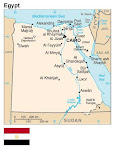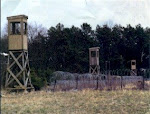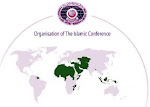 A border dispute could become the spark that launches China and India into a military conflict, with Chinese strategists resurrecting the concept of a "partial war" to recover what they call "Southern Tibet," the region India calls "Arunachal Pradesh," (picture left) according to a report from Joseph Farah's G2 Bulletin. The area in northeast India has a 650-mile unfenced border with China, which lays claim to the region and refers to it as Southern Tibet.Some of the threats are emanating from Chinese publications that reflect the opinion of the Chinese leadership without making official comments. For example, the China Institute of International Strategic Studies, or IISS, has said it visualizes "two crises" for the People's Liberation Army in the immediate future. One was the succession in the North Korean leadership should Kim Jong-Il die.The other was India's continued presence in territory China claims as its own.Keep in touch with the most important breaking news stories about critical developments around the globe with Joseph Farah's G2 Bulletin, the premium, online intelligence news source edited and published by the founder of WND.India regards Arunachal Pradesh as the 24th state in the Indian Union. Yet China still claims much of it as part of the Tibet Autonomous Region and may be prepared to launch an action to regain it.Ironically, the veiled threat comes at a time when China looks upon its relationship with India as being in the "best period" of their joint history.Called the "land of the rising sun," Arunachal Pradesh means "land of the dawn lit mountains," since it is in the Himalayas.The Burma Road, known to have helped supply China during World War II, passes through the region. Burma, or Myanmar, borders on the East.The 650-mile Chinese-Indian border in Arunachal Pradesh is separated by the so-called McMahon Line, also known as the Line of Actual Control.The dispute dates back to the time India was ruled by Britain, whose officials in 1914 held a conference over the boundary. In 1962, China and India fought a serious border war, with Chinese troops advancing well into Arunachal Pradesh but later withdrawing. The region flared up again in 1986.Now, the region is becoming a focal point again.A Chinese military website that reflects official positions observed that the border issue may be symbolic of how India looks upon China as the "greatest obstacle" to its rise.The website suggested that the border dispute over Southern Tibet constitutes a security threat to China and that Beijing may need to adopt a strategy to weaken control of the Indian central government.
A border dispute could become the spark that launches China and India into a military conflict, with Chinese strategists resurrecting the concept of a "partial war" to recover what they call "Southern Tibet," the region India calls "Arunachal Pradesh," (picture left) according to a report from Joseph Farah's G2 Bulletin. The area in northeast India has a 650-mile unfenced border with China, which lays claim to the region and refers to it as Southern Tibet.Some of the threats are emanating from Chinese publications that reflect the opinion of the Chinese leadership without making official comments. For example, the China Institute of International Strategic Studies, or IISS, has said it visualizes "two crises" for the People's Liberation Army in the immediate future. One was the succession in the North Korean leadership should Kim Jong-Il die.The other was India's continued presence in territory China claims as its own.Keep in touch with the most important breaking news stories about critical developments around the globe with Joseph Farah's G2 Bulletin, the premium, online intelligence news source edited and published by the founder of WND.India regards Arunachal Pradesh as the 24th state in the Indian Union. Yet China still claims much of it as part of the Tibet Autonomous Region and may be prepared to launch an action to regain it.Ironically, the veiled threat comes at a time when China looks upon its relationship with India as being in the "best period" of their joint history.Called the "land of the rising sun," Arunachal Pradesh means "land of the dawn lit mountains," since it is in the Himalayas.The Burma Road, known to have helped supply China during World War II, passes through the region. Burma, or Myanmar, borders on the East.The 650-mile Chinese-Indian border in Arunachal Pradesh is separated by the so-called McMahon Line, also known as the Line of Actual Control.The dispute dates back to the time India was ruled by Britain, whose officials in 1914 held a conference over the boundary. In 1962, China and India fought a serious border war, with Chinese troops advancing well into Arunachal Pradesh but later withdrawing. The region flared up again in 1986.Now, the region is becoming a focal point again.A Chinese military website that reflects official positions observed that the border issue may be symbolic of how India looks upon China as the "greatest obstacle" to its rise.The website suggested that the border dispute over Southern Tibet constitutes a security threat to China and that Beijing may need to adopt a strategy to weaken control of the Indian central government.As in the days of Noah...






















































































.bmp)

























.bmp)